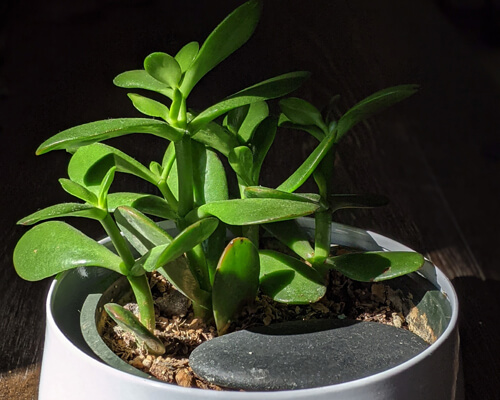How to Prune Rosemary?

Do you want to bring out the best in your rosemary plants? Learning how to prune rosemary is especially important when it comes to herbs like rosemary.
Not only that, but regular pruning of your rosemary will ensure a tidy-looking and healthy plant with lots of tender sprigs full of flavor.
Don’t worry if you have no previous experience trimming plants.
In this post, we’ll walk you through the process from start to finish. So that even beginners can get growing their own rosemary garden.
When to Prune Rosemary?
The ideal time to prune rosemary is anytime from early spring through late summer, once the risk of late spring frost has passed.
It is important to prune four or six weeks before the risk of fall or winter frost.
For those living in warmer climates, you can prune a little later than usual.
Pruning should also be done when plants are actively growing and as new growth begins in the spring.
This helps promote new growth and encourages bushier, fuller plants with more branches for a better harvest.
How to Prune Rosemary?
Pruning rosemary is an important part of its care and cultivation.
As it promotes healthy growth, encourages bushier plants, and helps maintain an attractive shape.
Trimming also allows gardeners to control the size and shape of the plant.
It is best to prune rosemary during the spring or fall when the plant isn’t actively growing.
Here are some tips for pruning rosemary:
1. Sterilizing your pruning shears
Before you start snipping away at the branches, use rubbing alcohol or bleach to thoroughly clean and sanitize your shears.
This will help prevent the spread of any diseases or infections that could damage your plant.
Once the blades are wiped down, rinse them off with water and then dry them with a clean cloth.
2. Cutting from each outside branch
Once the shears are sterilized, you can begin pruning away any dead or faded flowers. As well as any broken or diseased branches that you spot.
To encourage bushier growth in your rosemary plant, try cutting off one to two inches from each outside branch of the plant.
This will force them to split apart and fill out the overall shape and size of the plant.
3. Pinching back
If you need to reduce the size of large or overgrown rosemary plants. It’s best to trim back all branches by one-third during their active growing season which is typically in springtime or summer months.
You can also reduce their size through “pinching back” where you take small amounts from stems throughout each section of the plant rather than just all at once for a uniform look.
Pinching back is great for shaping bushy plants into more manageable sizes without sacrificing too much foliage growth.
4. Pruning amount
When pruning your rosemary plants make sure not to remove too much foliage at once. As this could harm their health and slow down growth significantly.
Aim for removing only 20-30% of foliage per pruning session maximum. So that they don’t become overly stressed out by drastic changes in foliage level in such a short amount of time.
Pruning rosemary regularly throughout the growing period will help keep it healthy while promoting attractive leaf growth.
This means more delicious meals can be prepared with more tasty herbs.
Keeping these tips in mind will ensure that you get peak flavors from this classic herb every time.
What happens if you don’t prune rosemary?
If you don’t prune rosemary, the plant can become overgrown and potentially out of control.
As a result, it will produce fewer leaves and flowers, due to becoming woody from lack of trimming.
This will also lead to decreased air circulation around the rosemary bush as it gets larger, which can make it more susceptible to disease and pests.
Additionally, if trimmed back regularly, rosemary bushes can often reach up to six feet tall.
However, left untrimmed they can easily expand beyond this size.
The branches of an untrimmed rosemary bush may become brittle and thick due to a lack of sunlight reaching the inner parts of the bush.
If not taken care of properly by pruning the plant on a regular basis, the leaves may dry out or fall off due to inadequate water and nutrient intake.
In addition, if left unattended for too long, dead or dying branches may become entangled in other healthy branches.
This can lead to potential breakage or further damage, which can cause irreversible damage and impede overall growth patterns.
Should you let the rosemary flower?
Whether or not you should let your rosemary flower depends on your individual situation and reason for growing it.
Generally speaking, it is best to minimize flowering in order to encourage the plant to focus on foliage growth and develop a strong, healthy root system.
If you are growing rosemary for culinary purposes, then letting the plant flower can diminish the flavor of its leaves.
In this instance, pruning the flowers off as soon as they appear will help maintain the quality of the leaves for cooking and flavoring dishes.
Another reason to avoid allowing your rosemary to flower is that it can reduce the overall longevity of the plant.
While some species may flower only once per year, others tend to flower multiple times during the growing season.
And with successive flowering cycles, the demand for energy and resources from the plants themselves increases.
When too much energy is diverted from leaf development to producing flowers and seeds. Rosemary eventually becomes weak and more susceptible to disease and pests.
Finally, if you want your rosemary shrubs to be both beautiful and healthy, then cut them back as the flowers appear.
This will also help maintain its compact size by preventing the vigorous vertical growth that normally follows flowering.
This is especially important if your space doesn’t accommodate large shrubs.
Regular pruning can help keep your rosemary within desired boundaries while still allowing it to thrive.
Do you cut rosemary off the stem?
Yes, rosemary can be cut off the stem before being used in any recipe or dish.
For example, when a recipe calls for fresh rosemary, it should be chopped off the stem and added to the meal.
It’s best to snip off the small leaves of the sprig at a 45-degree angle close to the stem, as this unlocks more of its aromatic oils and flavors.
Rosemary can also be stripped from its stem if it needs to be used finely chopped.
Simply grab hold of one end of the stem and slide your fingers down along it, stripping off all of the leaves as you go.
This works best with the smaller stems and will produce a light but fragrant result that is perfect for adding to dressings or sauces.
When using rosemary in larger pieces or whole sprigs, such as when roasting meats or veggies, it’s best to leave them on their stems.
This prevents them from falling apart during cooking.
As well as giving dishes a flavor boost, using rosemary like this also looks really attractive and adds an extra level of presentation.
Does rosemary like the sun or shade?
Rosemary is a sun-loving herb and does best when it gets plenty of bright, direct sunlight.
It can withstand some shade, but it prefers to soak up at least 6 hours of full sun each day.
Rosemary also flourishes when it gets ample nutrients from the soil.
So you’ll need to be sure that your soil has a slightly acidic pH level between 6 and 7 for optimal growth.
When planted in ideal conditions with full sun exposure, rosemary grows quickly and produces fragrant leaves that are perfect for cooking or using as a garnish.
The plant is also known for its long-lasting foliage, making it an attractive addition to your garden year-round.
How long do rosemary plants live?
Rosemary plants typically live for 10 or more years if they are planted in the right environment and given the appropriate amount of care.
However, many rosemary varieties have been known to live up to 15 or even 20 years with proper maintenance and love.
Depending on where and how it is grown, rosemary may require different levels of light, pruning, and water.
The amount of attention you give your rosemary plant can greatly affect its lifespan.
For example, if a rosemary plant is kept in a container indoors, it will not survive as long as it is planted directly into the ground outdoors.
Additionally, giving your rosemary more light than it needs can cause the leaves to dry out more quickly and reduce its life expectancy.
If cared for properly, however, these hardy evergreen shrubs can enjoy lengthy lifespans that bring joy year after year.
Conclusion
By following the tips we have given, you will have successfully pruned your rosemary plant and it will continue to grow strong and healthy.
Rosemary is a relatively low-maintenance herb, so don’t be discouraged if you make a mistake here or there.
The most important thing is to enjoy the process and the results of your hard work.






